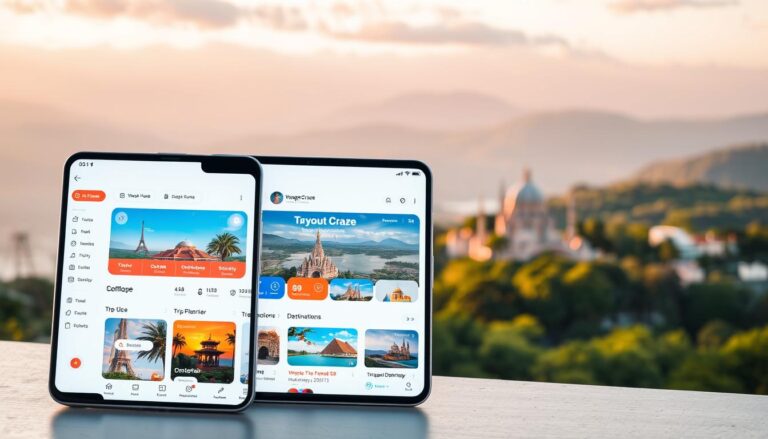Thinking about trekking the Inca Trail in 2025? You’re in for an adventure of a lifetime. This famous trail, leading to the majestic Machu Picchu, is a bucket-list item for many travelers. It’s not just about reaching the destination; it’s about soaking in the history, culture, and stunning landscapes along the way. Whether you’re a seasoned hiker or a curious newbie, this guide will walk you through everything you need to know for a successful journey.
Key Takeaways
- The Inca Trail is a 4-day trek that covers 26 miles, ending at Machu Picchu.
- Booking permits early is crucial as they sell out quickly, especially during peak seasons.
- Proper physical preparation is important due to the trail’s high altitude and challenging terrain.
- Choosing the right gear, including sturdy hiking boots and a reliable poncho, can make or break your trip.
- Understanding the cultural significance and preservation efforts of the trail enhances the hiking experience.
Understanding the Inca Trail: History and Significance
The Legacy of the Inca Empire
The Inca Trail is like a living museum that stretches across the Andes, linking the present with a fascinating past. It was part of the Qhapaq Ñan, an extensive network of roads that connected the vast Inca Empire. This trail wasn’t just a path; it was a lifeline for the Incas. It facilitated communication, trade, and even military movements throughout the empire. Walking the trail today, you can almost hear the echoes of ancient footsteps and imagine the bustling activity that once thrived along its route.
Cultural Importance of the Trail
For the Incas, the trail was more than just a physical path; it held deep spiritual significance. It led to sacred sites like Machu Picchu, serving as a pilgrimage route that was vital to their culture. The trail’s spiritual importance is still recognized today, drawing visitors who wish to connect with the ancient energy that seems to pulse through the stones. The Inca Trail was a vital pilgrimage route for the Incas, leading to sacred sites such as Machu Picchu, highlighting its spiritual importance in their culture.
Preservation Efforts and Challenges
Preserving the Inca Trail is a task that requires constant vigilance. The rise in tourism has put pressure on this ancient path, leading to concerns about its environmental and cultural impact. The Peruvian government is actively working to protect the trail, implementing conservation efforts that aim to reduce waste and encourage sustainable tourism practices. These efforts are crucial to maintaining the trail’s natural beauty and cultural heritage for future generations. Travelers can contribute by respecting the environment, staying on designated paths, and supporting local communities.
Preparing for Your Inca Trail Adventure
Physical Fitness and Training Tips
Getting ready for the Inca Trail isn’t just about packing your bags; it’s about preparing your body too. This trek spans 45 kilometers over 4-5 days, and you’ll need to be in decent shape to enjoy it. Start by ramping up your cardio—think running or cycling—to boost your aerobic fitness. Then, add strength training exercises like leg presses and squats to build muscle and endurance. And don’t forget to practice with hiking poles; they’ll help with balance on those uneven paths.
Allow yourself 2 to 4 months to get into shape before hitting the trail. This way, you can tackle the heights of the Andes with confidence. Also, consider spending a few days in Cusco beforehand to acclimatize to the altitude.
Essential Gear and Packing List
Packing the right gear can make or break your Inca Trail experience. Layers are key—temperatures can swing from hot in the day to chilly at night. Here’s a quick list of must-haves:
- Clothing: Layers, including a waterproof jacket, insulating layers, and base layers.
- Sleeping Gear: A sleeping bag rated for -10°C (14°F) and a lightweight tent.
- Footwear: Sturdy hiking boots and comfy socks.
- Extras: Trekking poles, a headlamp, insect repellent, and sunscreen.
Don’t forget to pack light! You’ll carry your gear for four days, so every pound counts.
Booking Permits and Choosing a Tour Operator
The Inca Trail is popular, and permits are limited to 500 per day—including guides and porters. So, if you’re planning to trek in 2025, book early, especially for the peak months of April to September.
When choosing a tour operator, compare prices and what’s included in the package. Most will cover your permit fee, guide, food, and lodging. It’s wise to understand and follow Machu Picchu’s regulations to help preserve this incredible site for future visitors.
Remember, the Inca Trail is more than a hike; it’s a journey through history and culture. With the right preparation, you’ll make memories that last a lifetime.
Navigating the Inca Trail: A Day-by-Day Itinerary
Day 1: Starting Your Journey
The first day on the Inca Trail is a gentle introduction. You’ll kick off at Km 82, following a path that meanders through the Sacred Valley. This stretch is often called “Inca Flat,” meaning it’s mostly level with some gentle inclines. As you walk alongside the Urubamba River, you’ll gradually gain altitude, reaching the campsite at Wayllabamba. This day is all about soaking in the stunning landscapes and ancient ruins.
Day 2: Conquering Dead Woman’s Pass
Brace yourself for a tough day. Starting early, you’ll face the trail’s highest point, Dead Woman’s Pass, at a daunting 4,215 meters (13,829 feet). The climb is steep and challenging, but the views at the top are spectacular. After conquering the pass, you’ll descend into the Pacaymayo Valley, where you’ll camp for the night.
Day 3: Exploring Incan Ruins
Day three is a trekker’s delight, offering a mix of archaeological sites and breathtaking scenery. You’ll pass through cloud forests and visit impressive ruins like Runkurakay and Sayacmarca. The trail winds through lush landscapes, providing ample opportunities to explore and take photos.
Day 4: Arrival at Machu Picchu
The final stretch of the Inca Trail leads you to the Sun Gate, where you’ll catch your first glimpse of the majestic Machu Picchu. Arriving early allows you to witness the sunrise over the ruins, a truly unforgettable sight. Spend the day exploring the ancient city, marveling at its architectural wonders and the surrounding mountains.
The journey on the Inca Trail is as much about the path as it is about the destination. Each step brings you closer to Machu Picchu, but the memories you create along the way are what truly make this trek unforgettable.
Experiencing the Inca Trail: Flora, Fauna, and Landscapes
Diverse Ecosystems Along the Trail
The Inca Trail is like a journey through a living museum of nature. You start your hike amidst the towering peaks of the Andes, where snow-capped mountains loom large, and as you move forward, the landscape shifts dramatically. Suddenly, you’re in the lush embrace of the Amazon rainforest. It’s wild how you can go from one extreme to another in just a few days of hiking. The trail cuts through several unique ecological zones, each with its own climate and vegetation.
- Andean Highlands: Here, you’ll find hardy plants like cacti and bromeliads clinging to life on rocky slopes.
- Cloud Forest: A mystical world where mist and greenery intertwine, home to vibrant orchids and towering trees.
- Amazon Basin: Dense, humid, and buzzing with life, this part of the trail feels like stepping into another world entirely.
Wildlife Spotting Opportunities
The fauna along the Inca Trail is just as diverse as the flora. Keep your eyes peeled for some incredible wildlife, including endangered species. The trail is a sanctuary for creatures like the spectacled bear and the Andean cock-of-the-rock. If you’re lucky, you might even spot a puma or an Andean fox. Bird enthusiasts will be thrilled with the variety of species fluttering about, from hummingbirds to parrots. And don’t forget the smaller critters; the trail is teeming with frogs, lizards, and even river otters in the streams.
Hiking the Inca Trail isn’t just about reaching Machu Picchu; it’s about immersing yourself in a world where nature reigns supreme.
Photographing the Scenic Views
The Inca Trail is a photographer’s dream. Every turn offers a new breathtaking vista. Capture the majesty of the Urubamba Range, with peaks soaring over 16,000 feet. The deep valleys and vibrant cloud forests provide endless opportunities for stunning shots. Don’t miss the ancient staircases and hanging bridges that add a touch of history to your photos. And of course, the final destination, Machu Picchu, is the ultimate backdrop for any travel album.
- Best Photo Spots:
- The Sun Gate at sunrise.
- Phuyupatamarka’s sweeping views.
- The lush vegetation along the trail.
Experiencing the Inca Trail is about more than just the hike; it’s about connecting with a landscape that’s as diverse as it is beautiful. Whether you’re a nature lover, a wildlife enthusiast, or a photography buff, the trail offers something for everyone. So pack your camera, keep your eyes open, and get ready to be amazed by the natural wonders of the Inca Trail.
Best Times to Hike the Inca Trail in 2025
Dry Season vs. Wet Season
When planning your hike on the Inca Trail, understanding the seasonal differences is key. The dry season, stretching from April to October, is known for its clear skies and cooler temperatures. This is the most popular time to visit, so expect more fellow hikers and packed campsites. On the flip side, the wet season, from November to March, brings warmer weather and lush, vibrant landscapes, thanks to increased rainfall. While fewer tourists are around, you’ll need to be prepared for muddy trails and potential rain showers.
Monthly Weather Expectations
Here’s a quick breakdown of what to expect month-by-month:
- March: The trail reopens after its annual February closure. Expect lingering wet conditions but fresher trails.
- April: Marks the start of the dry season, with moderate temperatures and reduced rainfall.
- May to August: Peak season with the driest weather. Perfect for those postcard-worthy views but requires early booking.
- September to October: As the dry season winds down, the trail sees fewer crowds, making it a pleasant time to hike.
- November to December: Wet season picks up, bringing more rain but also a quieter trail experience.
Booking Tips for Peak Seasons
To secure your spot during the peak months of June, July, and August, it’s wise to book your trek at least 6-8 months in advance. Campsites like Ayapata and Wiñay Wayna fill up quickly, so early planning is crucial. Consider traveling in the shoulder months of April or October for a balance of good weather and fewer crowds. Remember, February is off-limits as the trail closes for maintenance.
Planning ahead ensures not only a spot on this iconic trail but also the chance to experience it in the best conditions possible. Whether it’s the bustling dry months or the serene wet season, each offers its own unique charm.
Health and Safety on the Inca Trail

Dealing with Altitude Sickness
Hiking the Inca Trail can be tough on your body due to the high altitudes. The trail starts at around 2,800 meters (9,186 feet) and climbs to a peak of 4,215 meters (13,829 feet). Altitude sickness is a common concern, and it’s important to prepare for it. Spend a few days in Cusco, which sits at 3,400 meters, to help your body adjust before starting the trek. Stay hydrated, eat light meals, and avoid alcohol and caffeine to minimize symptoms like headaches and nausea.
Trail Safety and First Aid
Safety on the trail is paramount. Always hike with a group and a certified guide. The Inca Trail is well-regulated, with checkpoints at various locations like Km 82 and Wiñayhuayna. Carry your ID at all times, as identification is required at these points. Bring a basic first aid kit with essentials like band-aids, antiseptic wipes, and pain relievers. In case of emergencies, guides are trained to assist and have protocols in place.
Sustainable and Responsible Hiking Practices
Preserving the Inca Trail for future generations is crucial. Follow these simple rules:
- Stick to authorized routes and camping sites.
- Do not leave any trash behind or disturb wildlife.
- Avoid picking plants or taking anything from the trail.
The trail is guarded by park rangers and the National Police, ensuring that rules are followed. Remember, the trail is closed for maintenance every February, so plan your hike accordingly. By following these guidelines, you help maintain the trail’s natural beauty and cultural significance.
Cultural Encounters on the Inca Trail

Interacting with Local Communities
Walking the Inca Trail isn’t just about the stunning scenery and historical sites; it’s also a chance to meet the people who call this region home. The local Quechua communities have a rich heritage that they are eager to share with visitors. Engaging with these communities offers a glimpse into their daily lives and traditions. Travelers often find themselves learning a few words of Quechua or trying their hand at traditional crafts. These interactions can be as simple as sharing a smile or as involved as participating in a communal activity, like farming or weaving.
Understanding Incan Traditions
The Incan civilization left a lasting legacy that continues to influence the culture of the Andean people. As you trek along the trail, you’ll pass through ancient ruins that tell the story of a once-great empire. Guides often share tales of Incan mythology and explain the significance of various archaeological sites. Machu Picchu, for example, is not just a tourist destination but a sacred place that holds deep spiritual meaning for the locals. Understanding these traditions adds a layer of depth to your journey, making it more than just a physical adventure.
Participating in Cultural Ceremonies
One of the highlights of hiking the Inca Trail is the opportunity to participate in traditional ceremonies. These events, often led by local shamans, are a way to connect with the spiritual world and pay respect to the Pachamama, or Mother Earth. Ceremonies might include offerings of coca leaves or the lighting of incense. While participation is optional, many trekkers find these rituals to be a profound experience, providing a deeper connection to the land and its people.
The Inca Trail offers a rich experience, blending natural beauty with cultural immersion. It’s a journey through time, offering travelers a unique opportunity to explore ancient Inca ruins and engage with the local Quechua culture.
Wrapping Up Your Inca Trail Adventure
So, there you have it, folks. The Inca Trail is no walk in the park, but it’s definitely a journey worth taking. From the breathtaking views to the rich history, every step is an adventure. Whether you’re a seasoned hiker or just someone looking to tick off a bucket list item, this trail offers something for everyone. Just remember to book early, pack smart, and prepare for a bit of a challenge. But trust me, standing at the Sun Gate, looking down at Machu Picchu, makes it all worthwhile. Happy hiking, and may your 2025 adventure be unforgettable!
Frequently Asked Questions
How long does it take to hike the Inca Trail?
The Inca Trail hike usually takes 4 days and 3 nights to complete, covering about 26 miles.
What is the best time of year to hike the Inca Trail?
The best time to hike is during the dry season, from April to October, when the weather is sunny and there’s less rain.
Do I need to be in good shape to hike the Inca Trail?
Yes, a decent level of fitness is needed because the trail is at a high altitude and can be challenging.
How do I get a permit to hike the Inca Trail?
Permits are required and can be booked through a licensed tour operator. It’s best to book early, as permits sell out fast.
What should I pack for the Inca Trail?
You’ll need comfortable hiking boots, a poncho for rain, warm clothes, a sleeping bag, and a backpack with essentials like water and snacks.
Is it safe to hike the Inca Trail alone?
Hiking alone is not allowed. You must join a guided tour with a group and a licensed guide for safety.







